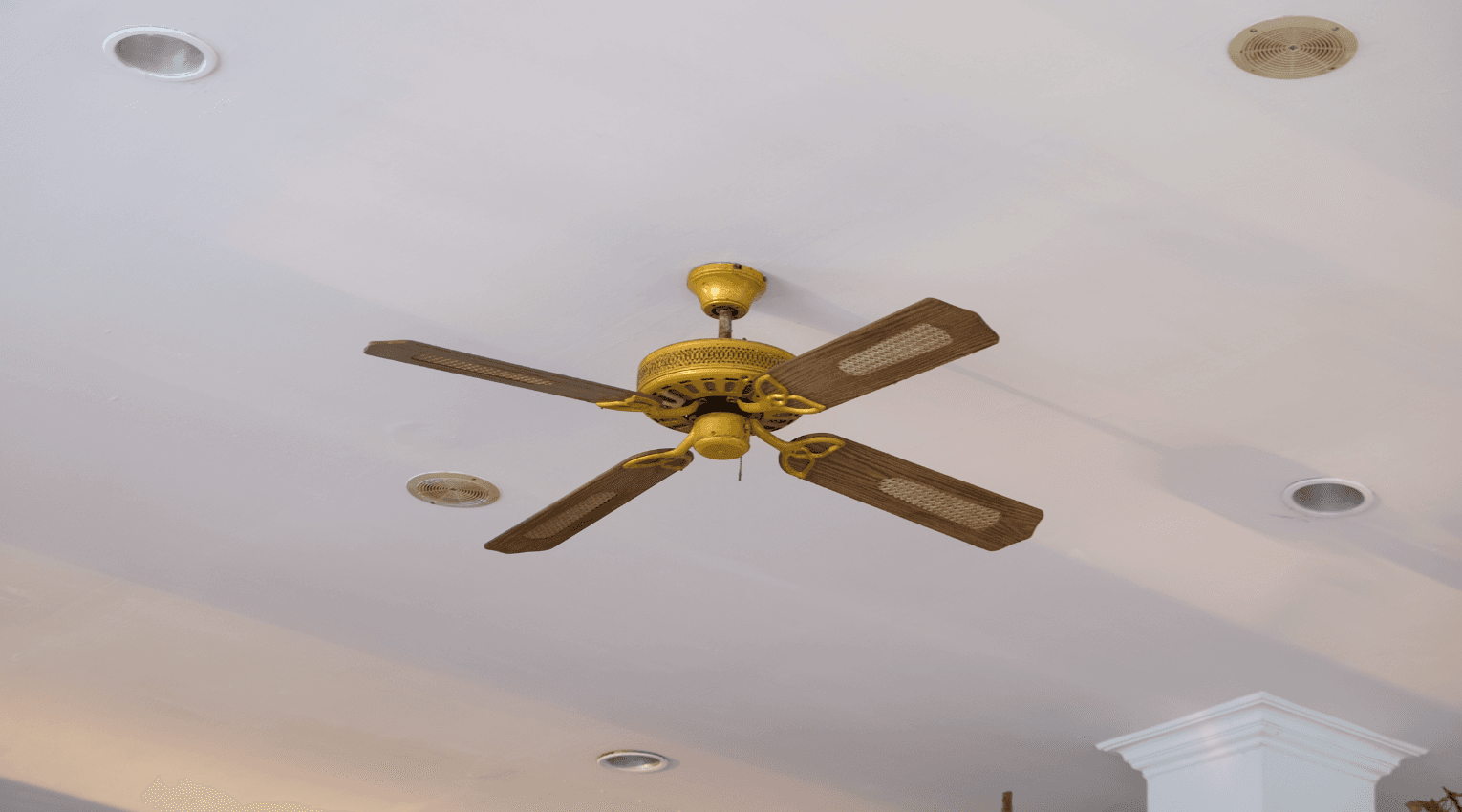Your September Home Maintenance To-do List

The upkeep required to keep your home and systems running smoothly and efficiently can feel endless and daunting. That’s why we’ve broken out the most essential maintenance tasks, providing steps for projects you can do on your own — and on your own time — throughout each month.
Cooler weather is just around the corner, making September the perfect time to get your home ready for a damp, colder climate. This month, we’re tackling four tasks in and outside of the home that you can likely do yourself. Here’s what’s we suggest for September:
- Prune and Landscape Your Garden
- Clean your dryer vent
- Check your foundation and crawl spaces
- Dust your ceiling fan blades
Prune and Landscape Your Garden
Pruning can keep critters away, prevent plant growth that could eventually damage your foundation, siding, and roof, and maintain your home’s curb appeal. Pruning in the fall will also make spring pruning that much easier.
You’ll need:
- Pruning shears
- Loppers
- Eye protection
- Work gloves
- Heavy-duty trash bags
You may also want:
- Pruning saws
- Hedge shears
- Pole pruners
How to Prune Your Garden Before Winter
Cut back areas where your hedges are overgrown, unshapely, or extending onto your neighbor’s property. Clear areas where greenery is encroaching on your home’s foundation and/or roof as well as near sidewalks or your driveway. You can plan on pruning yourself or hiring a landscaper. If you go the DIY route, work in the morning or evening to avoid summer sun and midday heat.
Clean Your Dryer Vent
Built-up dust and lint in dryer vents, coupled with heat from dryer cycles, can be a major fire hazard. The U.S. Fire Administration reports that 2,900 home dryer fires are reported each year, causing an estimated $35 million in property loss/damage.
You’ll need:
- Eye protection
- Dust mask
- Dryer vent cleaning kit (flexible rods, vent brush, lint remover)
- Screwdriver
You may also want:
- Power drill
How to Clean Your Dryer Vent
First, find out how to access your dryer’s venting system, then determine whether to clean it from inside the house or via the home’s exterior. Once the cleaning method is decided, purchase and/or put together the flexible rods and brushes on your dryer cleaning kit ($15-$20 at most home improvement and hardware stores). Unplug the dryer, then detach the dryer duct connection.
Cleaning Your Dryer Vent from Inside the House
Using your flexible rods and brushes, reach into the dryer vent and brush out dirt and debris. Repeat until dust and lint are removed and the vent is clear.
For additional cleaning capabilities, attach your flexible rods to your power drill. Set your drill to run clockwise, at medium speed, then reach into the vent, turn the drill on slowly, and brush out dirt and debris.
Once the vent is clear, sweep up and dispose of all lint and dust. Reattach the vent pipe to the dryer and plug the dryer back in.
Cleaning Your Dryer Vent from Outside the House
Prop open or remove the dryer hood. Use your dryer cleaning kit (with or without a drill) to clear all ducts. Dispose of all debris. Replace the hood and plug the dryer back in.
Check Your Foundation and Crawl Spaces
Did you know that your foundation has vents designed to control airflow and moisture levels in your foundation and crawl spaces? Moisture damage can wreak all kinds of havoc on your home, including rotting joists, mold growth, and foundation damage. Vents also promote airflow which can aid temperature control and energy retention.
So it’s important to check your vents and crawlspaces to proactively identify mold problems, close your vents as the air gets colder, and ensure that the vents don’t require repairs.
You’ll Need:
- Work gloves
- Dust mask
- Tape measure
- Screwdriver and screws
- Screens or vent covers
You may also want:
- Automatic vents
- Power grinder
- Masonry hammer
- Barb spring
- Caulk
- Screwdriver
- Screws (Screw anchors with retaining clips Optional)
- 6 mm plastic sheeting
How to Locate and Close Your Vents
If your home has vents in the foundation, they’ll most likely be accessible through crawl spaces (e.g., under porches or via basement access) and they may be visible from the home’s exterior. Count how many foundation vents you have across your entire home, (most building codes require a vent within three feet of every corner), measure their sizes, then decide if you want screens or automatic vents as replacements. Screen vents will need to be removed and closed for cold-weather months, while automatic vents use temperature sensors to open and close when needed.
Purchase your new screens ($3—$50 each) or automatic vents ($10—$200 each) for each vent space. To install new foundation vents, first remove any existing closures (e.g., foam blocks or grates), then make any adjustments to the vent frame size to ensure a snug fit for your replacement.
Your new vents should fit snugly to allow air flow—while also keeping out pests and vermin. If your vents are in a crawl space that has a dirt floor, you can also put down plastic sheeting ($25—$60) to block extra moisture.
Dust Your Ceiling Fan Blades
Your last home maintenance task for September is an easy one that (depending on the number of ceiling fans in your home) should take just a few minutes.
Dusting your ceiling fan can be such an easy task to overlook (who’s looking up there, anyway?) but you’ll be thankful you did it.
A clean ceiling fan means better air quality. There’s less dust buildup on furnishings, rugs, and carpet, which means fewer allergens in your home.
You’ll need:
- Step ladder
- Pillowcase
- Dryer sheets or static-dust cloth
- Microfiber cloth
- Dust-repellent spray
You may also want:
- Extendable ceiling fan blade duster (especially handy if you have high ceilings)
How to Dust Your Ceiling Fan Blades
Set a ladder under your ceiling fan, and climb to a step where you’re not overextending your arms. (You don’t want to lose your balance!) Drape an old pillowcase over each blade, then pull the pillowcase across both the top and bottom to wipe it clean. The goal is to enclose all the dust inside the case, so you’re not sending dust across the room. If you don’t want to use a pillowcase, a static-capture cloth like a dryer sheet can also do the trick. To prevent future dust buildup, spray a clean rag with dust repellent and wipe both surfaces of each ceiling fan blade.
If you’re using an extendable fan blade duster (available at most home improvement stores), position the duster so it can dust both sides of the ceiling fan blade at the same time. Dust each blade in succession until all are clean.
Did you know that your Home Equity Dashboard includes a host of maintenance tutorials for every season? Get ahead of your fall tasks and keep your home, systems, and appliances running smoothly and efficiently, all year round.
You should know
We do our best to make sure that the information in this post is as accurate as possible as of the date it is published, but things change quickly sometimes. Hometap does not endorse or monitor any linked websites. Individual situations differ, so consult your own finance, tax or legal professional to determine what makes sense for you.



